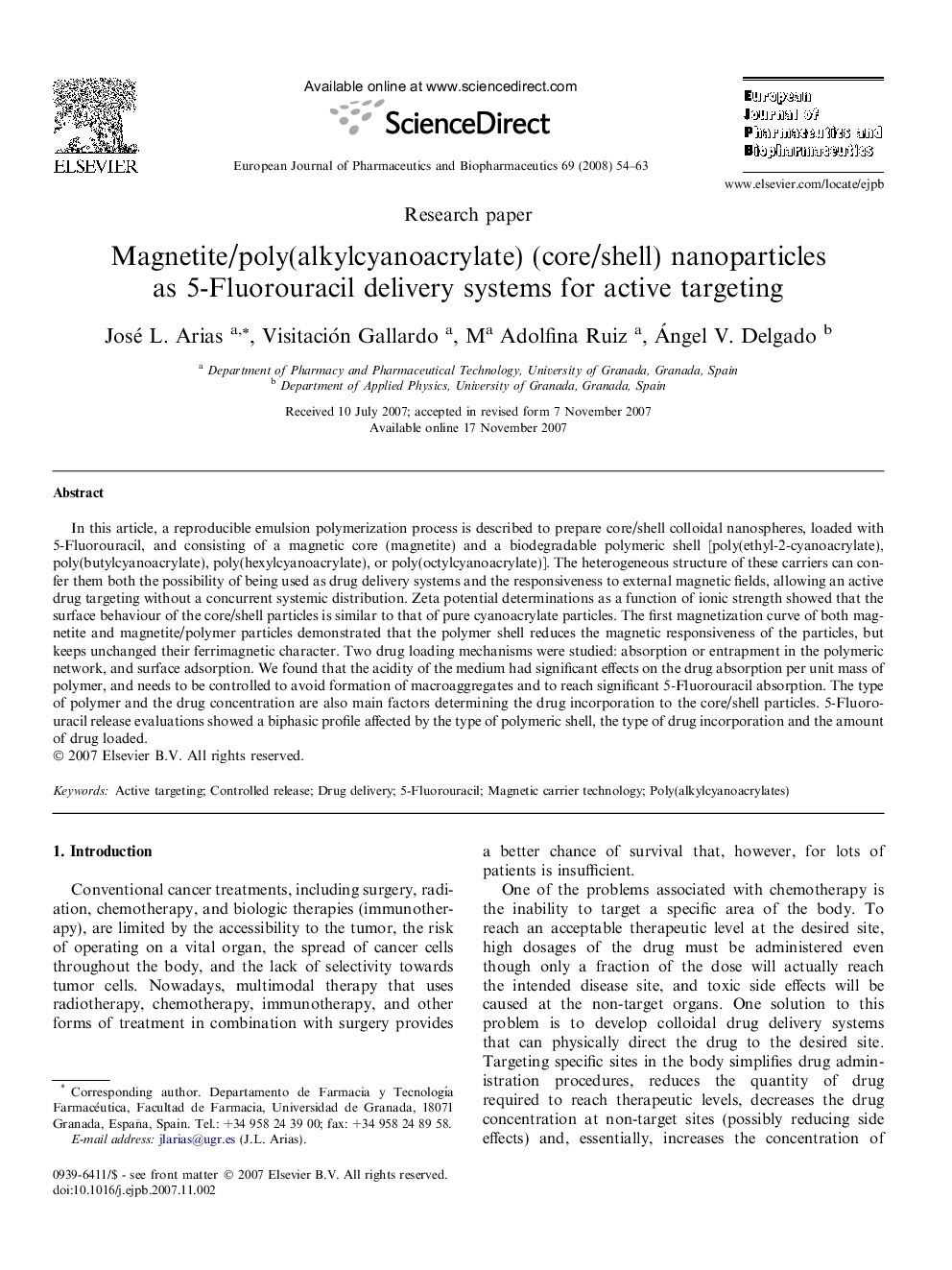| Article ID | Journal | Published Year | Pages | File Type |
|---|---|---|---|---|
| 2084772 | European Journal of Pharmaceutics and Biopharmaceutics | 2008 | 10 Pages |
In this article, a reproducible emulsion polymerization process is described to prepare core/shell colloidal nanospheres, loaded with 5-Fluorouracil, and consisting of a magnetic core (magnetite) and a biodegradable polymeric shell [poly(ethyl-2-cyanoacrylate), poly(butylcyanoacrylate), poly(hexylcyanoacrylate), or poly(octylcyanoacrylate)]. The heterogeneous structure of these carriers can confer them both the possibility of being used as drug delivery systems and the responsiveness to external magnetic fields, allowing an active drug targeting without a concurrent systemic distribution. Zeta potential determinations as a function of ionic strength showed that the surface behaviour of the core/shell particles is similar to that of pure cyanoacrylate particles. The first magnetization curve of both magnetite and magnetite/polymer particles demonstrated that the polymer shell reduces the magnetic responsiveness of the particles, but keeps unchanged their ferrimagnetic character. Two drug loading mechanisms were studied: absorption or entrapment in the polymeric network, and surface adsorption. We found that the acidity of the medium had significant effects on the drug absorption per unit mass of polymer, and needs to be controlled to avoid formation of macroaggregates and to reach significant 5-Fluorouracil absorption. The type of polymer and the drug concentration are also main factors determining the drug incorporation to the core/shell particles. 5-Fluorouracil release evaluations showed a biphasic profile affected by the type of polymeric shell, the type of drug incorporation and the amount of drug loaded.
